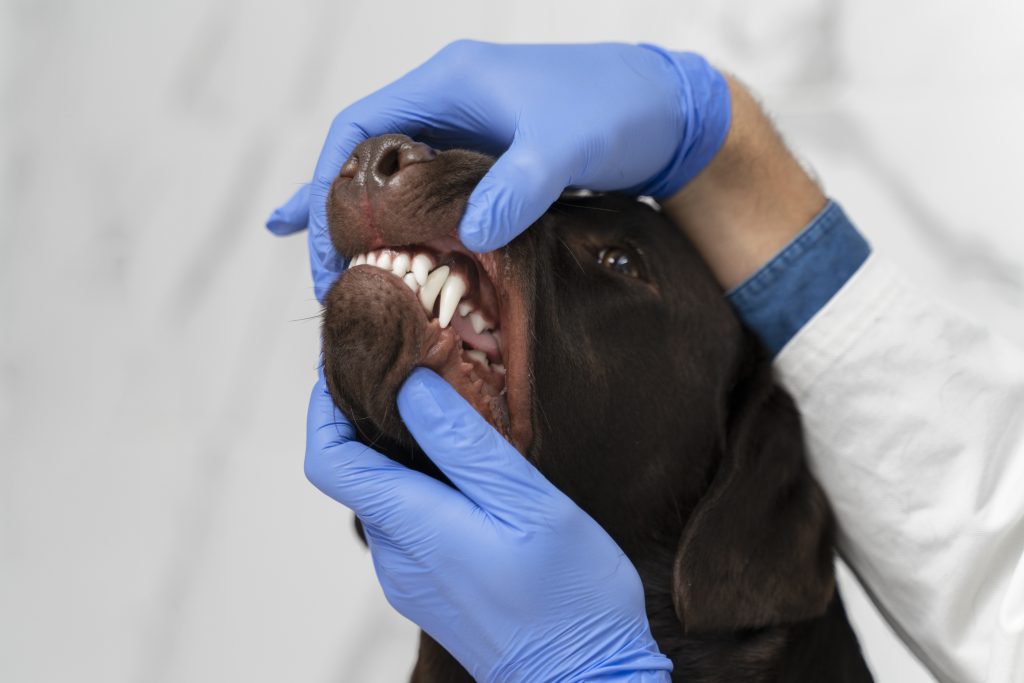February is Pet Dental Health month, a month dedicated to raising awareness of the dental health of our pets and how it can impact their lives.
Dental disease can affect our furry four-legged friends, just the same as it does us. Also known as periodontal disease, it refers to a condition where the tissues supporting the teeth become inflamed. Periodontal disease is associated with gingivitis and in more severe cases can present as tooth root abscesses or bone infections of the jaw¹

Image credit:
freepik via Freepik.com
https://bit.ly/3DLY9sp
Periodontal disease affects almost 90% of dogs by the age of 2 years, making it the most common dental disease in dogs. In addition, between 50 and 90% of cats older than four years of age suffer from some form of dental disease²
It is a progressive disease caused by bacteria in the mouth that inflict damage to the gums, bones and supporting structures of the teeth. Preventative care is vital, since most visible signs of gum disease aren’t present until the disease is fairly advanced.
There are four stages of Periodontal disease, one being mild disease and four being severe disease. An accurate diagnosis of the particular stage is made by periodontal probing and taking of x-rays under general anaesthesia.
Stage 1: Gingivitis (inflammation of the gums) with no loss of bone or tooth attachment
Stage 2: 25% or less of the tooth’s attachment to the supporting structures is lost
Stage 3: 25 to 50% of the tooth’s support is lost
Stage 4: more than 50% of the tooth’s attachments are lost
Signs of Periodontal Disease in Dogs and Cats:
Halitosis or bad breath is the primary sign of periodontal disease.
In addition, the following are usually present:
• Red or puffy gums
• Gums that bleed during brushing or chewing
• Receded gums
• Behaviour changes such as acting more withdrawn or aggressive, or a reluctance to play with chew toys
How to Treat Periodontal Disease:
Stage 1 is the only stage that is reversible. With proper treatment, pets with Stage 2 and 3 may not continue to progress to Stage 4. Tooth extraction is the only treatment for Stage 4 disease.
Professional Dental Cleaning
Scaling the teeth above and below the gumline to remove plaque and tartar is the standard treatment, which is performed under general anaesthesia.
Left untreated, gum disease is not only painful, but it can negatively affect your pet’s health due to the effects the bacterial toxins have on the different organs in the body. Periodontal disease is known to increase the risk of chronic kidney disease, liver disease and heart disease in dogs and cats.
How to Prevent Periodontal Disease:
• Regular daily brushing of teeth
• Use of dental chews and prescription dental diets
• Preventative professional dental cleanings under anaesthesia
References:
¹ https://vcahospitals.com/know-your-pet/dental-disease-and-its-relation-to-systemic-disease-in-pets
² https://www.vet.cornell.edu/departments-centers-and-institutes/cornell-feline-health-center/health-information/feline-health-topics/feline-dental-disease

